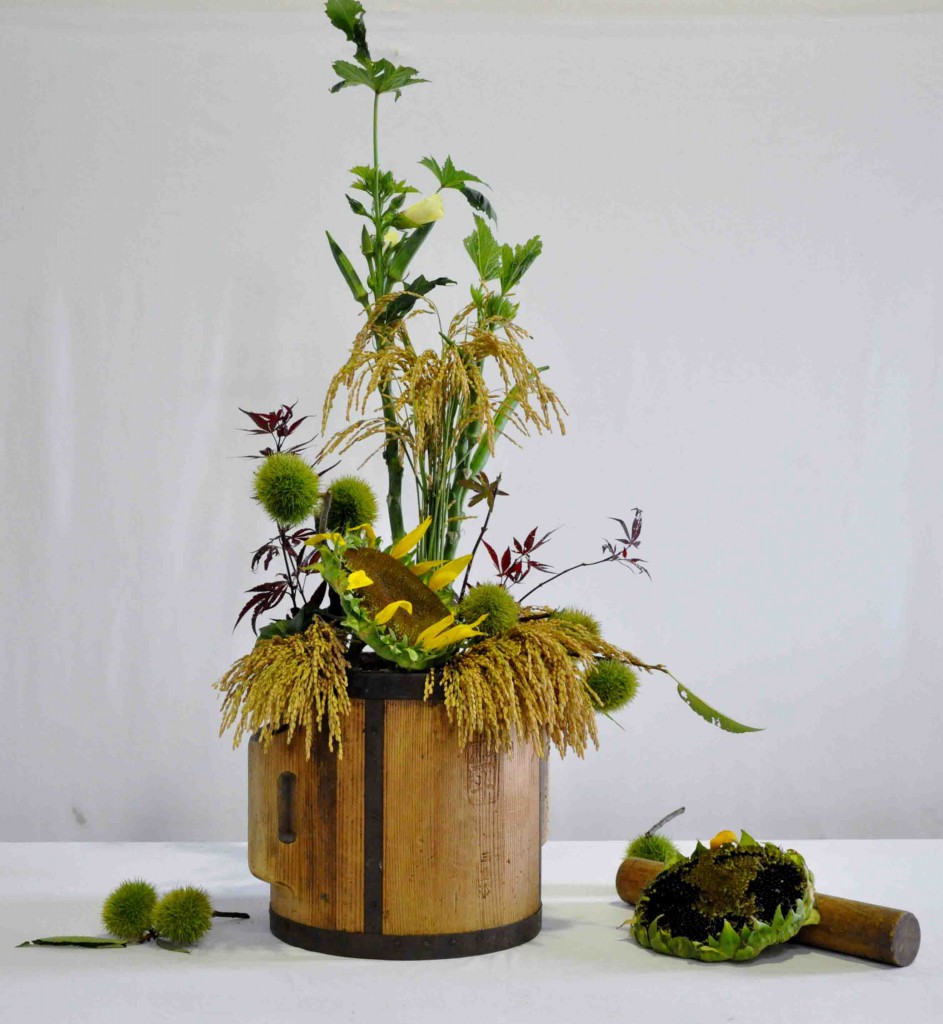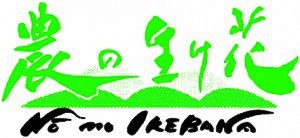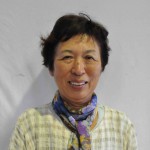<”Noh no Ikebana” is an art of arranging agricultural pThe end of the summerroducts together with agricultural implements and other familiar instruments. It’s a type of Ikebana but mainly for farmers. The series “Noh no Ikebana” will show you how to best feature the materials and containers you choose, with the help of fans of this style of Ikebana nationwide.>
Arrangements with deep, large containers with a wide opening such as ittomasu (a large wooden bucket to measure rice), seoikago (a bamboo pannier) and a hibachi (a porcelain brazier) have strong impact, and they’ll be good event floral decors. Just having one arrangement is already wonderful, but combining it with arrangements in other types of containers, placing them in front, is also nice.
Setting the container at a slight angle will make your arrangement look more dynamic. When using a container which does not hold water, please put a bottle or jar filled with water.
Make it a tall arrangement to keep a good balance. The idea is to make the whole height of your arrangement two and a half times of the containers by using many kenzan pinholders and floral foams. If you want to fill in empty side spaces, add small items or materials which are related to the arrangement theme.
It’s important that the inside of the containers are not seen easily from the outside, so have some materials cover the rim to naturally hide the opening. One of the common problems with containers with a wide opening is overcrowding. Please try to leave some spaces to avoid this and achieve gracefulness.
The end of the summer is the theme of this arrangement that features faded sunflowers. Okra is used to give height and empty spaces are left on the both sides to give a looser effect. Next to the main arrangement is tokaki, a tool to go with ittomasu, which is added for better visual balance.
<Container>
Containers: ittomasu (wooden bucket to measure rice) and tokaki (wooden bar to be used with ittomasu)
<Materials>
Vegetables and plants: sunflowers, okra, rice stalks, Japanese maples and chestnuts
<profile>
Tomoko Hiramatsu, 74, began No no Ikebana in around 1970. Used to be a facilitator for No no Ikebana Club in Mie Prefecture.




